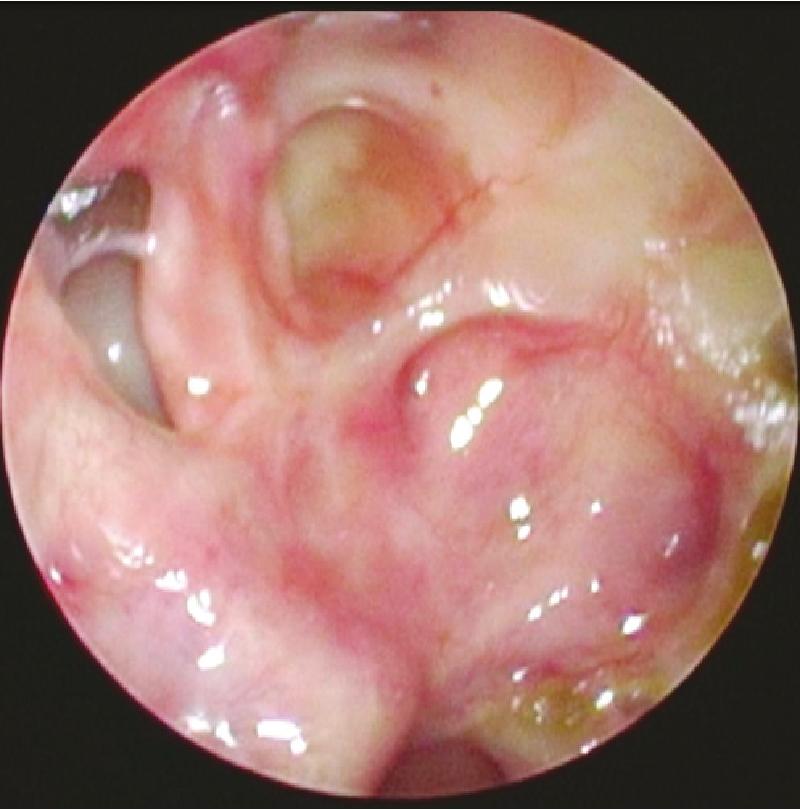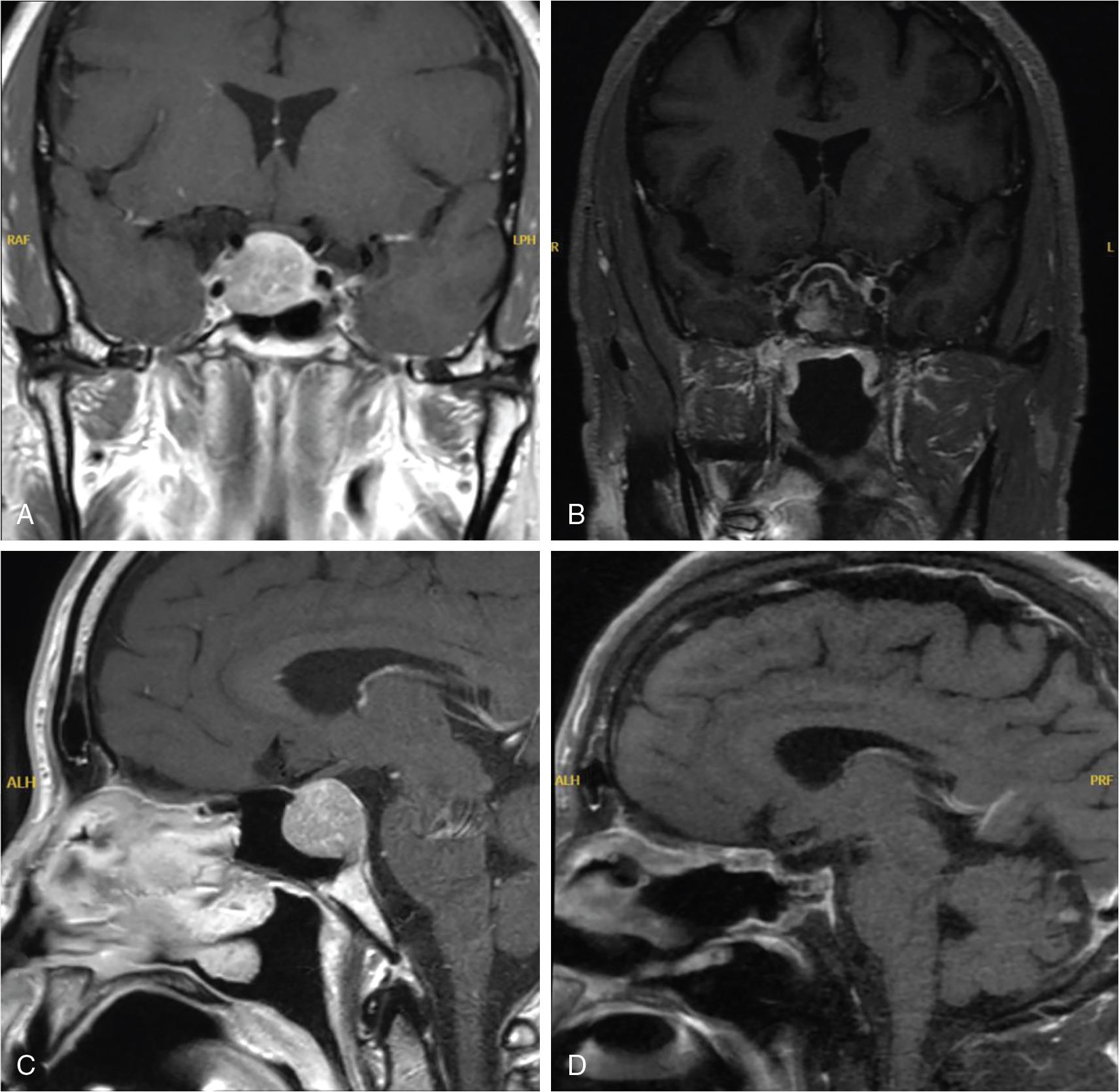Physical Address
304 North Cardinal St.
Dorchester Center, MA 02124
Endoscopic skull base surgery has transformed the management of skull base tumors. Although these innovations have expanded the scope of the endoscopic endonasal approach beyond the sella and across the floor of the cranial fossa and substantially lowered the morbidity associated with these procedures, cerebrospinal fluid (CSF) leaks remain a common complication. A myriad of materials have been used by skull base surgeons for reconstruction of skull base defects. Initial reconstruction attempts consisted of multilayered free graft closures using autologous fat grafts, synthetic dural replacement, and fibrin glue held in place with an inflated intranasal Foley catheter with CSF leak rates as high as 35% with these approaches. Postoperative CSF rhinorrhea rates plummeted, however, with the development of the posterior-based vascular pedicled nasoseptal flap (NSF) in 2006. The success rate of this was further bolstered by the use of multilayer rather than monolayer vascularized flap closure. With the development of grading systems for severity of intraoperative CSF leaks based on degree of flow, skull base surgeons have been able to further modify and tailor reconstructive techniques to minimize rates of postoperative CSF rhinorrhea.
In addition to the skull base reconstruction, adequate postoperative management of these patients after reconstruction following skull base tumor surgery is imperative in preventing CSF rhinorrhea. This aspect of care is not well defined and is often surgeon or institution dependent. Postoperative precautions that limit the elevation of intracranial pressure (ICP), administration of acetazolamide, use of lumbar drainage, use of antibiotics, and postoperative imaging all vary based on surgeon preferences but are key in avoidance of complications. This chapter provides an overview of the postoperative management of patients who underwent reconstruction for intraoperative CSF leaks following skull base surgery. Key points and clinical pearls of postoperative management after reconstruction following skull base tumor surgery are given in Box 38.1 .
Smaller skull base defects (<1 cm) have a low risk of postoperative CSF rhinorrhea, but larger defects (particularly >3 cm) have a higher risk of postoperative CSF rhinorrhea. Larger defects require more strict and longer duration of skull base precautions than smaller defects (i.e., 4 weeks vs 1 week, respectively).
CSF leak volume can be graded by various systems; high-flow leaks are defined as dural defects greater than 1 cm 2 , significant subarachnoid dissection, or a wide opening of the arachnoid cisterns. High-flow leaks require more strict and longer duration of skull base precautions than low-flow leaks (i.e., 4 weeks vs 1 week, respectively).
The use of diuretics is controversial but may be helpful in persistently increased ICP.
The use of permanent CSF diversion is recommended in recurrent or persistent leaks, particularly in the setting of elevated ICPs; the timing and ICP parameters are debated widely and institution dependent.
The use of antibiotics is recommended but remains controversial.
The timing of and resumption of CPAP following skull base surgery is widely debated and surgeon dependent and varies anywhere from 1 week to months following surgery.
Although no risk stratification or risk mitigation algorithms are described in the literature, the likelihood of CSF leak varies based on many factors. Tumor size, location, and type as well as extent of subarachnoid dissection can determine the risk of CSF rhinorrhea. CSF leak rates have been found to range from 6% for esthesioneuroblastoma and 10% for pituitary adenomas to as high as 40% for chondroid tumors. , Tumor location in the posterior fossa was associated with the highest rate of postoperative leak followed by the anterior skull base; sellar and suprasellar lesions were associated with the lowest rates.
Patient sex may modulate the degree to which body mass index (BMI) affects postoperative CSF leak; female patients with this complication possess significantly higher BMIs than those without, though this difference remains largely unobserved among men. Overall, a BMI greater than 25 kg/m 2 appears to increase the rates of postoperative CSF leak, particularly in the setting of a high-flow intraoperative leak at the anterior skull base, sella, or suprasellar locations; BMI appears to have no bearing on the rates for posterior fossa defects. Additional factors, such as length of surgeon training, difficulty of resection, and preoperative hydrocephalus, have been posited to affect CSF leak rates as well. The use of lumbar drains and NSFs ( Figs. 38.1 and 38.2 ) significantly mitigate this risk, and they are discussed at length in other chapters. , Last, in the setting of possible idiopathic intracranial hypertension or otherwise elevated ICPs, an ophthalmologic consultation should be requested. Elevated ICPs may cause papilledema and may also increase the possibility of postoperative CSF rhinorrhea; this may alter intraoperative repair and postoperative management of these patients.


Become a Clinical Tree membership for Full access and enjoy Unlimited articles
If you are a member. Log in here